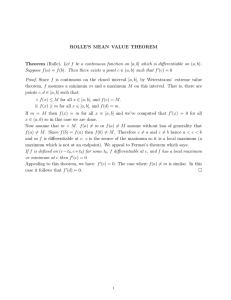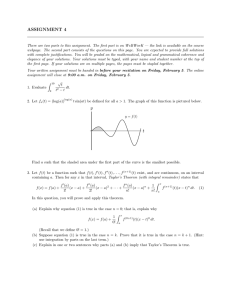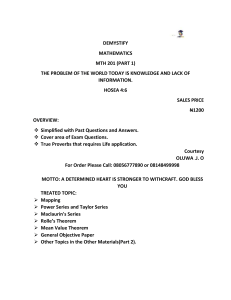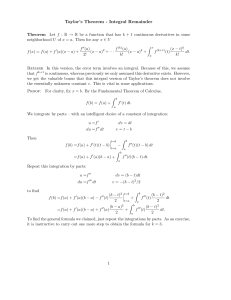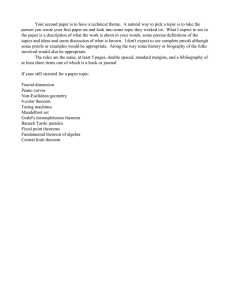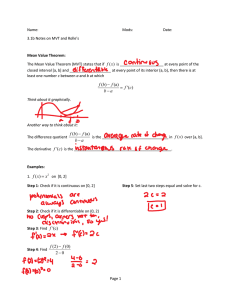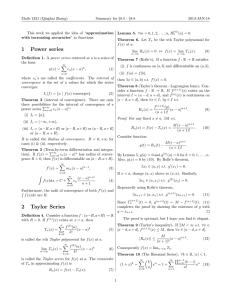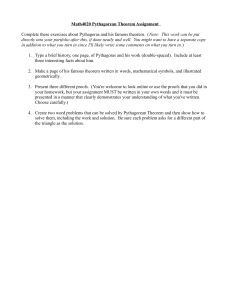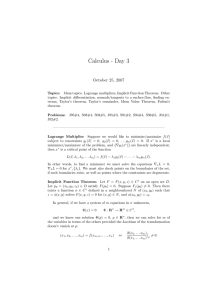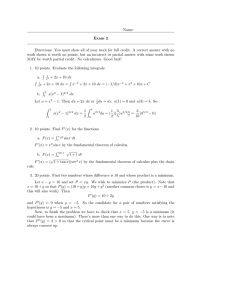Taylor`s Theorem - BetsyMcCall.net
advertisement
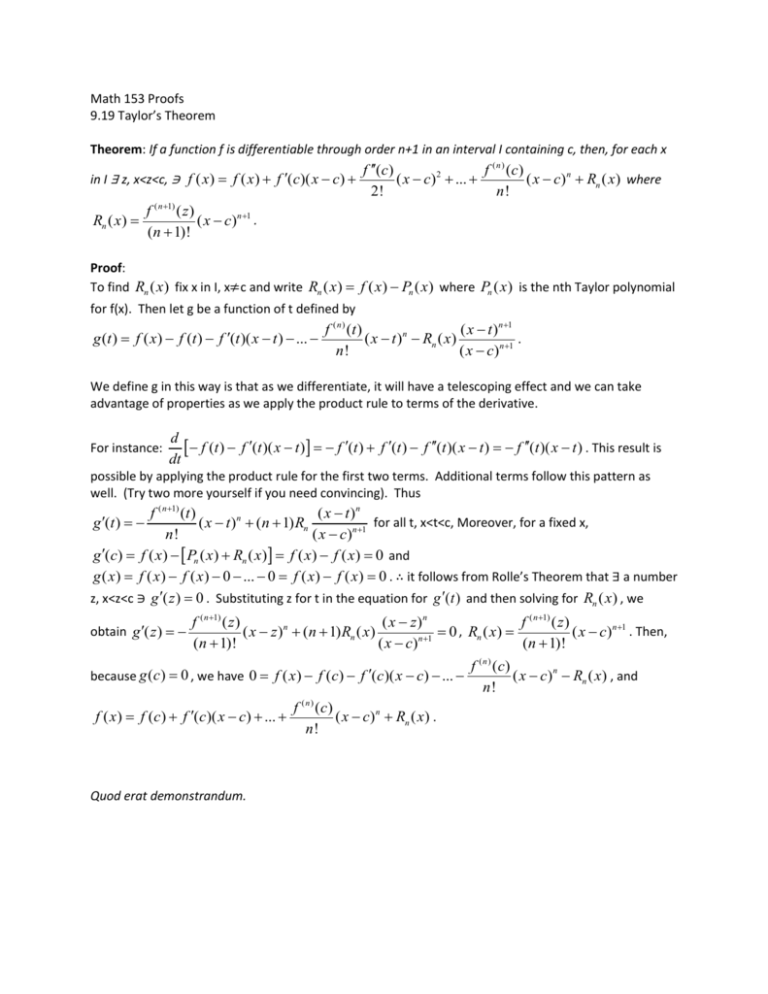
Math 153 Proofs 9.19 Taylor’s Theorem Theorem: If a function f is differentiable through order n+1 in an interval I containing c, then, for each x in I ∃ z, x<z<c, ∋ f ( x ) f ( x ) f (c)( x c) Rn ( x ) f (c) f ( n ) ( c) ( x c) 2 ... ( x c) n Rn ( x ) where 2! n! f ( n1) ( z ) ( x c)n 1 . (n 1)! Proof: To find Rn ( x ) fix x in I, x≠c and write Rn ( x ) f ( x ) Pn ( x ) where Pn ( x ) is the nth Taylor polynomial for f(x). Then let g be a function of t defined by g (t ) f ( x ) f (t ) f (t )( x t ) ... f ( n ) (t ) ( x t )n 1 . ( x t ) n Rn ( x ) n! ( x c)n1 We define g in this way is that as we differentiate, it will have a telescoping effect and we can take advantage of properties as we apply the product rule to terms of the derivative. For instance: d f (t ) f (t )( x t ) f (t ) f (t ) f (t )( x t ) f (t )( x t ) . This result is dt possible by applying the product rule for the first two terms. Additional terms follow this pattern as well. (Try two more yourself if you need convincing). Thus f ( n1) (t ) ( x t )n n for all t, x<t<c, Moreover, for a fixed x, g (t ) ( x t ) (n 1) Rn n! ( x c)n1 g (c) f ( x) Pn ( x) Rn ( x) f ( x) f ( x) 0 and g ( x ) f ( x ) f ( x ) 0 ... 0 f ( x ) f ( x ) 0 . ∴ it follows from Rolle’s Theorem that ∃ a number z, x<z<c ∋ g ( z ) 0 . Substituting z for t in the equation for g ( t ) and then solving for Rn ( x ) , we f ( n1) ( z ) ( x z)n f ( n1) ( z ) , ( x z )n (n 1) Rn ( x) 0 R ( x ) ( x c)n 1 . Then, n n 1 (n 1)! ( x c) (n 1)! (n) f (c) ( x c) n Rn ( x ) , and because g ( c) 0 , we have 0 f ( x ) f (c) f (c)( x c) ... n! f ( n ) (c) f ( x ) f (c) f (c)( x c) ... ( x c) n Rn ( x ) . n! obtain g ( z ) Quod erat demonstrandum.
